#historical aeronautics
Explore tagged Tumblr posts
Text
Un Siecle D'aviation Avec Air France :: Jean Lasserre & Helene le Guerneve

View On WordPress
#air france#air orient#air union#books by jean lasserre & helene le guerneve#cgt#cidna airlines#civil aviation#commercial aircraft#compagnie transaerienne#first edition books#french aeronautics#historic aircraft#historic airplanes#historical aeronautics#history airlines
0 notes
Text

Aeronaut Charles Dollfus on a vintage postcard
#briefkaart#photography#vintage#tarjeta#postkaart#postal#charles#photo#postcard#historic#carte postale#dollfus#ephemera#sepia#aeronaut charles dollfus#ansichtskarte#postkarte#aeronaut
5 notes
·
View notes
Text

#https://www.flickr.com/people/188196077@N03/#Rovigo#lensblr#photographers on tumblr#original photography#original photographers#original photography on tumblr#historic#europe#italian#Architecture#building#beauty#art#airplane#aereoplano#villa#aeronautic
11 notes
·
View notes
Photo
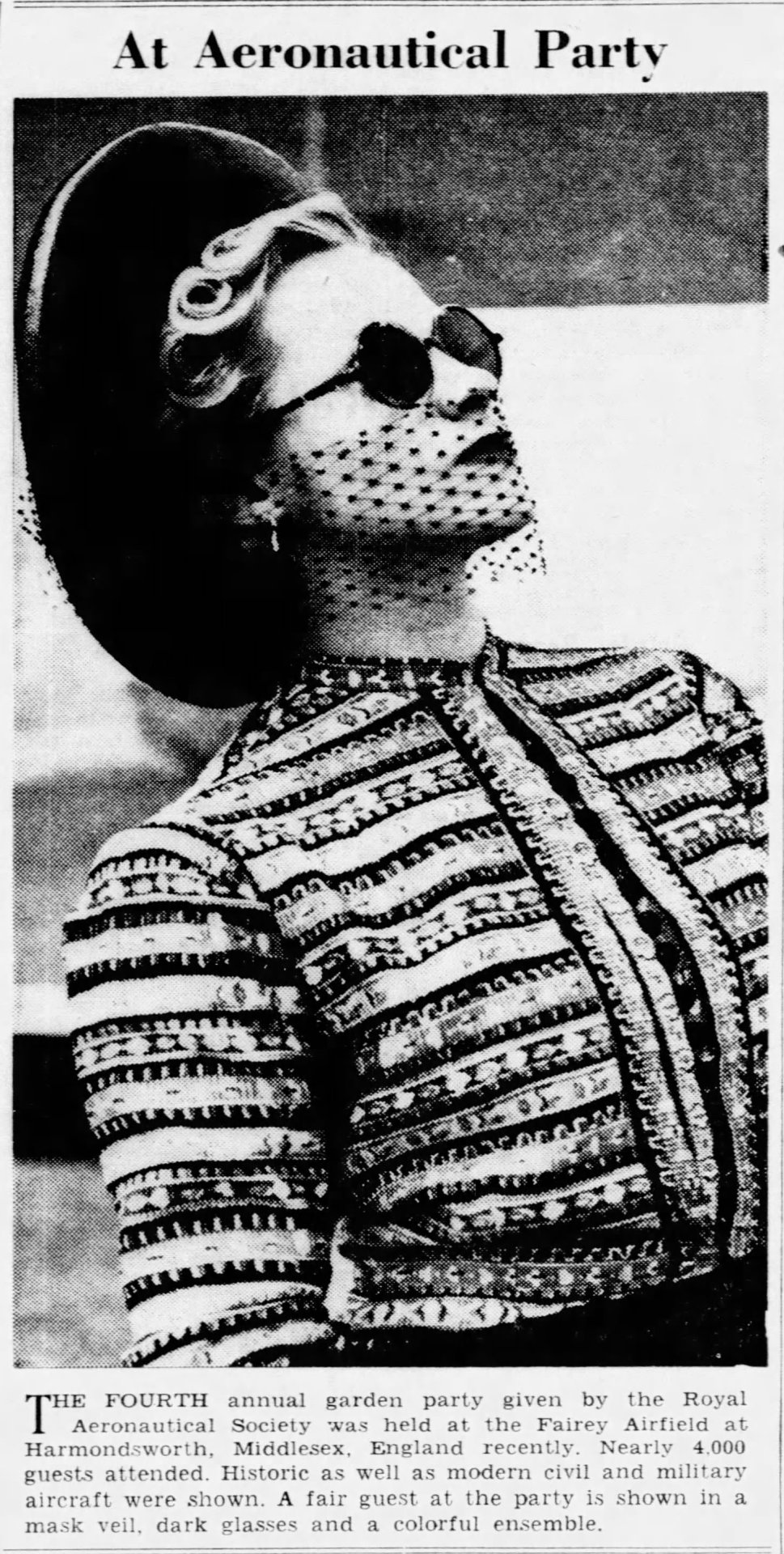
“At Aeronautical Party,” Windsor Star. May 18, 1938. Page 7. ---- THE FOURTH annual garden party given by the Royal Aeronautical Society was held at the Fairey Airfield at Harmondsworth, Middlesex, England recently. Nearly 4.000 guests attended. Historic as well as modern civil and military aircraft were shown. A fair guest at the party is shown in a mask veil, dark glasses and a colorful ensemble.
#fairey airfield#royal aeronautical society#garden party#middlesex#air show#aviators#1930s aviation#civil aviation#fashion show#historical fashion#historical clothing#vintage fashion#total babe#great depression in the united kingdom
1 note
·
View note
Text
You knooooowwww... >.>
The only difference, technically, between a school in the Zone? And on Earth? Is the American government won't recognize your Zone diploma...
Not accredited. But like..... I'm JUST SAYING? If you didn't try to pass your school off as some Big Ivy League type? Pulled the "oh yeah, you'd never have heard of it, it's local." And the COMPUTERS say it's legit?
How many people will dig deeper?
If you legitimately have the knowledge, you legitimately have the knowledge. Not YOUR fault you left out the whole "extra-dimensional" part. It makes folk nervous! And nervous folks get stabby.
So like? If you were ALREADY planning to "Move" as you euphemistically put it? Talked it over with your VERY concerned folks and friends? Who do NOT like the look of the steady but concerning rise of Anti-Ghost Powers That Be? Who finally put their foot down and reminded you that you are a TEENAGER and it's NOT your responsibility to fix the world?
Well...
Fuck those guys, I guess. You'll miss the old house, but Team "Taking our ball and going literally anywhere else" makes some good points. Why ARE you putting up with this?
And honestly, you've never SEEN your dad have so much fun. Him and the Reality Realtor just sorta... Vibe. Himbo to Himbo communications. Smatters of advanced physics. Fudge. It's great.
They move the portal. Collapse the old one in a way that makes it impossible to recover or recreate. You... kinda don't want to ask. They had that "mad scientist glint" in their eyes.
And while everyone's checking out brochures to different realities? You? Head off to the nearest College. It's the Zone, so technically you could go to any of endless billions. But you'd like your education some time this century.
Cue! Danny Fenton! Entering?
Academia's wet dream. A sprawling CITY of a college. Where the classes are on EVERYTHING and the price is FREE. People have Obsessions okay?? They NEED to teach. Debate and discuss! Study! Right papers and read them! It's been going on a while! And what happens when you find a subject that's NOT covered?
YOU COVER IT!
It's like if New York was a College. Good fucking luck find the dorms. Sleep on the floor like the rest of us, you casual.
Danny was Not Prepared ™.
He loves it though.
Classes on aeronautics next making the perfect sandwich, shoved next to historical basketry, stacked above alien slam poetry. But only on Tuesdays! Ever shifting. Breaking his Fenton Born Adhd in to a fine PASTE to be smeared upon bread. Happy mental stimulation chemicals go Brrrrrrrr
If it wasn't wildly inappropriate, he would LICK IT to claim it as his then wrap around it and gaurd like a territorial cat. He thought he HATED school! Turns out he just hated high-school. College though? College, or at least ZONE College, is fuckin AWESOME.
He's sit in SO MANY random classes just cause.
Picked up and dropped them at a whim. When they no longer sparked joy. He's been a flighty bitch and for once? No one CARES. No one says "you HAVE to commit and stick with this FOREVER once you choose this" and? It just? It's so FREEING! He's learned so MUCH!
He's probably gonna come back!
Which? Is how a deeply, DEEPLY weird aerospace engineer from supposedly bumfuck NOWHERE, end up working at Wayne Industries. He's.... a lil crazy behind the eyes. Ha ha... CONCERNING ™!
Dude sleeps on the lab floor. Has weirdly spotty knowledge. Can be an unprecedented genius one second and not know who the current president is the next. Doesn't know what DAY it is. Forgets to eat. Tried to make a fusion reactor out of the break room toaster before Sandra from accounting distracted him with pictures of her cat.
It's like he wanders through life blissfully unaware that he is both terrifying and about three seconds from killing them all. Then FUCKING TRIPS because he forgot to tie his shoelaces again.
Who hired this man?
WHY!?
I mean, we KNOW why. Probably to put him on a watch list. But? He's like a terrifying murder puppy! Built like a tank! That's stoned out of its mind half the time. And have you HEARD his college stories? That CAN'T be legal. Was this guy raised in a cult!? Aaaaaaaaaaa!!!!!????
@hdgnj @legitimatesatanspawn @babbling-babull @dcxdpdabbles @hypewinter
2K notes
·
View notes
Text
Providing a deep analysis of all Studio Ghibli films would be an extensive undertaking, considering the studio's rich and diverse catalog. However, I can highlight key themes and elements that are often present in their films.
1. **Spirited Away (2001):** Explores identity, environmentalism, and the spirit world. The bathhouse setting is a metaphor for societal structures.
2. **My Neighbor Totoro (1988):** Focuses on the innocence of childhood, the connection to nature, and the acceptance of mystery.
3. **Princess Mononoke (1997):** Tackles environmentalism, the clash between industrialization and nature, and the complexity of human relationships with the environment.
4. **Howl's Moving Castle (2004):** Examines themes of war, love, and transformation, set against a backdrop of magical realism.
5. **Grave of the Fireflies (1988):** A powerful anti-war film exploring the impact of conflict on two siblings during World War II.
6. **Kiki's Delivery Service (1989):** Focuses on self-discovery, independence, and the challenges of growing up.
7. **The Wind Rises (2013):** Tells the story of an aeronautical engineer against the backdrop of historical events, reflecting on creativity, passion, and the moral implications of invention.
8. **Porco Rosso (1992):** Explores themes of identity, war, and redemption through the tale of a World War I flying ace transformed into a pig.
9. **Castle in the Sky (1986):** Features an adventurous tale with themes of environmentalism and the consequences of human greed.
10. **Whisper of the Heart (1995):** Focuses on adolescence, dreams, and self-discovery, emphasizing the importance of pursuing one's passions.
These brief insights into a selection of Studio Ghibli films highlight their exploration of diverse themes, including environmentalism, identity, and the human connection with nature. Each film is a unique artistic expression that often combines fantasy with deep, thought-provoking narratives.
#studio ghibli#hayao miyazaki#spirited away#my neighbor totoro#princess mononoke#howl’s moving castle#grave of the fireflies#kiki's delivery service#the wind rises#porco rosso#castle in the sky#whisper of the heart#chatgpt#film#film analysis#film theory
2K notes
·
View notes
Text
that final jayvik scene, disability, and a world with pyramids

Bear with me for a second, doomed yaoi fans, I’m one of you.
The one thing that bothered me about the final scene between Jayce and Viktor is how Jayce calls Viktor’s leg and his disease “imperfections”. It feels dismissive, like these are superficial traits and not facts of life that Viktor had to deal with every day. They were a part of him, yes, but they hurt him, hampered him, and were literally killing him in the end. Viktor is allowed to have a complicated relationship with his disability.
It was a poor choice of words on Jayce’s part—that’s my explanation.
The best way I can reckon with Arcane conflating imperfection and disability/disease is by thinking about it in terms of a world with or without pyramids.

This idea comes from The Wind Rises, my favourite Ghibli film. There’s a lot of ways you can interpret the meaning of that film, but here’s how I do it.
Jiro, the protagonist of The Wind Rises, faces two terrible choices in the film. The first is whether to continue to design the airplanes he loves even when they will be used to kill, and the second is whether to allow his wife to stay with him even though she’s dying from tuberculosis and might survive longer if she lived in a sanatorium.
In both cases, he chooses the thing he loves. He designs his Zero planes and contributes massively to the field of aeronautics, and then the planes are sent to war. He lives together happily with his wife, and she passes away quickly. There is no correct choice for Jiro, but he chose a world with pyramids.

(sidenote: Jiro working on schematics with one hand so he can hold Nahoko’s in his other while she rests is jayvik coded)
See, the pyramids came at a huge human cost, but their cultural and historical value is undeniable. Their non-existence, just like the cost of their construction, would be a heavy thing.
The world where Viktor grows up, uses a cane, studies, uses a crutch, perseveres, ails, and dies, that is a world with pyramids.
The world where the Machine Herald erases all human suffering, that is a world without pyramids.
What I take away from Jayce and Viktor’s final scene ISN’T that Viktor’s disability is inconsequential, but that it’s worth it. That Jayce believes he’s worth it. And that he wants Viktor to believe he’s worth it, too.

#apologies this is the only thing in my brain right now#arcane season 2 spoilers#arcane s2 spoilers#jayvik#viktor arcane#jayce talis
43 notes
·
View notes
Text
Queer Adult SFF Books Bracket: Preliminary Round


Book summaries and submitted endorsements below:
The Hands of the Emperor (The Hands of the Emperor, At the Feet of the Sun, and other stories) by Victoria Goddard
Endorsement from submitter: "Amazing epic and intrinsically queer story about leaving home to change the world, about being a bridge between worlds, about what it means to choose to leave your home even which it is the most important place in the world to you. And so much more."
An impulsive word can start a war. A timely word can stop one. A simple act of friendship can change the course of history.
Cliopher Mdang is the personal secretary of the Last Emperor of Astandalas, the Lord of Rising Stars, the Lord Magus of Zunidh, the Sun-on-Earth, the god. He has spent more time with the Emperor of Astandalas than any other person. He has never once touched his lord. He has never called him by name. He has never initiated a conversation.
One day Cliopher invites the Sun-on-Earth home to the proverbially remote Vangavaye-ve for a holiday.
The mere invitation could have seen Cliopher executed for blasphemy. The acceptance upends the world.
Fantasy, romance, politics, secondary world, series, adult
The Principle of Moments by Esmie Jikiemi-Pearson (Order of Legends series)
A century-spanning space fantasy novel that will take you on a whirlwind adventure, from a Regency Era love affair between a time-traveller and the prince waiting for him in the past, to a rescue mission in the 60th century, where a girl desperately races against time as she searches for the sister the emperor stole.
6066: In Emperor Thracin’s brave new galaxy, humans are not citizens. Instead, they are indentured labourers, working to repay the debt they unwittingly incurred when they settled on Gahraan - a desert planet already owned by the emperor himself. Asha Akindele knows she’s just another voiceless cog working the assembly lines that fuel his vast imperial war machine. Her only rebellion: studying stolen aeronautics manuals in the dead of night. But then a cloaked stranger arrives to deliver an impossible message, and her life changes in an instant.
1812: Obi Amadi is done with time-travelling. Never mind the fact he doesn’t know how to cure himself of the temporal sickness he caught whilst anchoring his soul to Regency London, the one that unmakes him further with every jump. Or if the prince he loves will ever love him back. Or why his father disappeared. He is done. Until he hears about the ghost of a girl in the British Museum. A girl from another time.
When Obi’s path tangles with Asha’s and a prophecy awakens in the cold darkness of space, they must voyage through the stars, racing against time, tyranny, and the legacy of three heroes from an ancient religion who may be awakening, reincarnated in ways beyond comprehension.
Science fiction, fantasy, time travel, historical fiction, Regency, space opera, adventure, series, adult
#polls#queer adult sff#the hands of the emperor#victoria goddard#the principle of moments#esmie jikiemi-pearson#esmie jikiemi pearson#lays of the hearth fire#books#booklr#lgbtqia#tumblr polls#bookblr#book#lgbt books#queer books#poll#sff#sff books#queer sff#book polls#queer lit#queer literature
25 notes
·
View notes
Text

“MOON-BOUND APOLLO 8 --Separated from the McDonnell Douglas-built S-IVB rocket (foreground), Apollo 8, with its crew of three astronauts, speeds toward moon and historic first lunar fly-around. When astronauts splash down in the Pacific Ocean, they will have flown 230,000 miles from earth (370,150 km) and orbited the moon 10 times. As third stage of Saturn V launch vehicle, S-IVB will fire for 2.6 minutes to propel Apollo 8 into parking orbit. Following orbital checkout of rocket and spacecraft, S-IVB will restart and propel Apollo 8 into translunar trajectory, as shown in artist’s rendering. McDonnel Douglas Astronautics Company, a division of McDonnell Douglas Corporation, builds the S-IVB for National Aeronautics and Space Administration’s Marshall Space Flight Center.”
Date: December 21, 1968
McDonnell Douglas Corp PR photo: 68-235, B812-12-3
#Apollo 8#Apollo CSM Block II#CSM-103#Lunar Module#Lunar Module Test Article#LTA-B#Saturn V#SA-503#Rocket#NASA#Apollo Program#C Prime-type Mission#December#1968#concept art#my post
73 notes
·
View notes
Text

Spring Mountain Ranch, 1970
The springs of this ranch area made it one of the oldest settlements Las Vegas Valley by Native Americans. By the 1830s it had become a campsite for Euro-American explorers using the Spanish Trail.
Sgt. James B. Wilson and George Anderson established Sand Stone Ranch here in 1876. Their heirs operated the ranch for decades. It was also called Wilson Ranch. On the night of 1/17/42 a rancher in the area witnessed an airplane, "passing over in the twilight … the tail was bobbing up and down and otherwise acting in a peculiar manner." The plane crashed and killed Carole Lombard and 21 others. Tweed Wilson, grandson of the ranch founder, was among the guides who led the search party to the crash site.
Chet Lauck bought the property in '48. He built the ranch house from sandstone and redwood, and renamed it Bar Nothing Ranch.
German Baroness Vera Krupp bought the ranch in '55, expanded, added the pool, and changed the name to Spring Mountain Ranch. Here on a night in '59 she was tied with wire and robbed of a 33-carat diamond. It was next owned by Howard Hughes, who never came to the ranch.
In '72 California auto dealers Fletcher Jones and William Murphy bought the 520 acre ranch from Hughes Tool Co. and announced plans to building a housing community that would support 2000 people. The proposal was defeated by the Nevada Open Space Council and Red Rock Advisory Committee.
The property was sold to the State of Nevada, along with 80 acres at Pine Creek and rights to 52 springs in the valley and surrounding mountains. Spring Mountain Ranch State Park was established in '73. Under the original name Sand Stone Ranch it was listed in the National Register of Historic Places, 4/2/76.
Many of the buildings on the property have been renovated and restored including the sandstone cabins, blacksmith shop, outhouse and the hay and horse barn. Interior improvements were made throughout the ranch house. The above ground irrigation pipes were replaced with underground irrigation and trails were built for the park itself.
Photos: (1, 2) by Vernon Merritt, LIFE magazine. (3) Undated, Howard Hughes Professional and Aeronautical Photographs (PH-00321), UNLV Special Collections.
Saving Spring Mountain Ranch: A baroness, a billionaire, an enchanted escape, and the preservationists who put you on the invitation list - by Jonathan Warren.
Elizabeth Warren: Passionate Defender of Historic Las Vegas Architecture and Landscapes. The Women Who Saved History podcast.
History of Spring Mountain Ranch - Nevada State Parks.
National Register of Historic Places #76001141 Sandstone Ranch


70 notes
·
View notes
Text
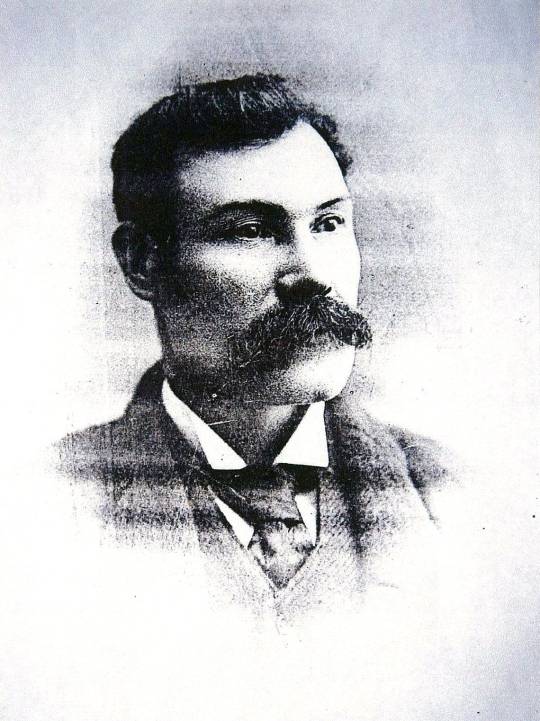
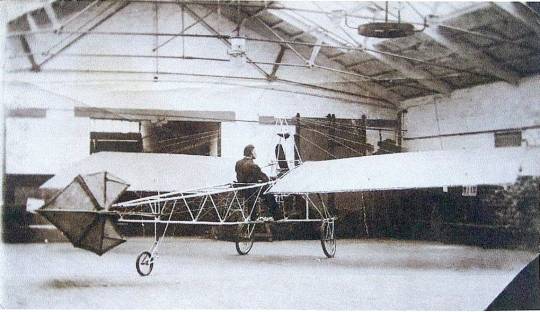
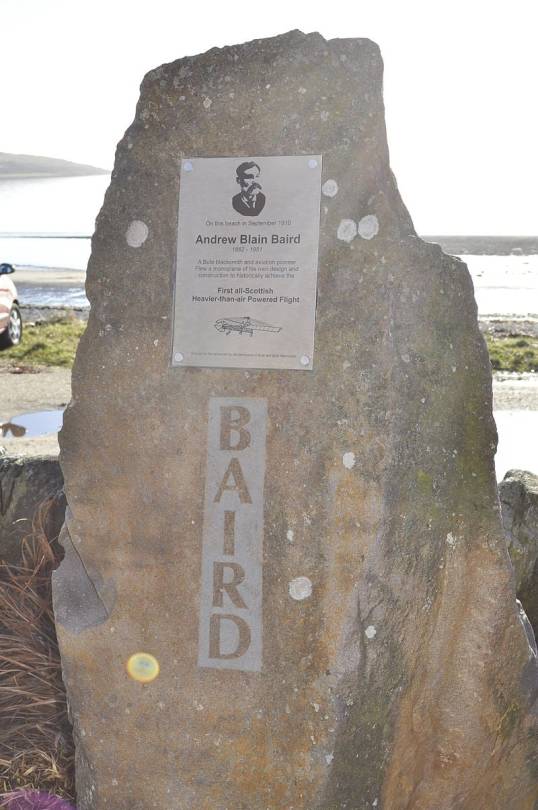
On 17th September 1910 Andrew Blain Baird, working as a blacksmith in Rothesay, made the first flight by an entirely Scottish designed and built aeroplane.
Andrew Blain Baird was born in 1862 in Sandhead on Luce Bay in the Rhinns of Galloway, Scotland. One of three sons, his father was a fisherman and handloom weaver. He became an apprentice to a blacksmith in Sandhead, worked as a lighthouse keeper on Lismore, then as an ironworker at Smith and McLean’s on the Clyde shipyards before finally setting up on his own as a blacksmith at 113 High Street in Rothesay, Isle of Bute, when he was 25.
Baird was a daring thinker, a pioneer and innovator. He created many improvements to the plough, built a unique model of the triple expansion engine powered by electricity and was one of the original members of the Scottish Aeronautical Society.
Eager to expand his knowledge of aviation, Baird corresponded with the early aviators Louis Bleriot and S. F. Cody and exchanged information about construction of aircraft and their flight. Inspired by a visit to Blackpool for England’s first ever Aviation Week in October 1909, he returned to Rothesay ready to design and build his own sophistocated monoplane similar to Bleriot’s but with an engine built by the Alexander Brothers in Edinburgh that was 4-cylinder, air-cooled and with water-cooled valves. The control system he would design for his aircraft would be unlike anything that had been developed at the time. His wife sewed brown trussore silk for the wings.
The Baird monoplane, once completed in his own shop in the summer of 1910, went on show at an exhibition in the Esplanade Flower Garden at the front of Bute. and then to the amazement and excitement of all it was moved to the Bute Highland Games on 20 August 1910.
From there it was taken for storage and readying directly to a barn owned by Willie Dickie at his farm at Cranlasgvourity, Bute.
Scottish aviation history was about to be made when in the very early morning of 17 September 1910, the Baird Monoplane was taken by a Mr Scott on his horse-drawn wagon to Ettrick Bay - with its wide expanse of sand reminiscent of the Kitty Hawk N.C. site chosen by the Wright Brothers for their historic flight.
In the sunshine and amid the wide golden sands of Ettrick Bay the first entirely Scottish designed and built plane sat ready to make history.
Andrew Baird was, on that day, assisted by his friend Ned Striven who was an Electrical Engineer with the Burgh of Rothesay and who had assisted him with the engine and related design considerations.
There on the wide expanse of Ettrick Bay beach, Baird and Ned Striven started the engine. All was ready. Hearts raced with anticipation. A small crowd looked on in amazement. And the flight into history began.
Flight Magazine on 24 September 1910,[1] described it as follows:
“Mr Baird was seated in the machine and on the engine being started the plane travelled along the sands at good speed. Naturally, on clearing the ground, the swerving influence of the axle ceased and the influence of the steering wheel brought the machine sharply round to the right causing it to swoop to the ground. The contact was so sharp that the right wheel buckled and the right plane suffered some abrasion by scraping along the beach.”
Andrew Blain Baird had realised his dream - he had flown in an aircraft of his own design and construction.
His was the first entirely Scottish flight of a heavier than air powered craft.
Noted pioneer aircraft manufacturer Tommy Sopwith sailed his yacht into Rothesay Bay in 1910 to visit the Marquess and to attend the Highland Games and there viewed the on display Baird monoplane. Very impressed, he was given permission to incorporate some of Baird’s innovations into the aircraft he was designing and which would have such a great impact on the course of World War I. Over the years, many others from around the world involved in aviation consulted Andrew Baird and learned from his pioneering experience and innovative mind.
12 notes
·
View notes
Text

Have Researchers Found Amelia Earhart’s Long-Lost Plane?
A new sonar image shows an airplane-shaped object resting on the bottom of the Pacific Ocean, not far from where Earhart and her navigator, Fred Noonan, went missing in 1937.
On July 2, 1937, pioneering pilot Amelia Earhart vanished somewhere over the Pacific Ocean near the end of her historic around-the-world flight. For decades, her mysterious disappearance has perplexed explorers, who have spent millions of dollars trying to find her missing Lockheed 10-E Electra plane.
Now, a possible new clue has emerged in the case: A sonar image captured during an expedition last fall shows an airplane-shaped object sitting on the ocean floor, not far from where experts believe Earhart likely crashed, reports the Wall Street Journal’s Nidhi Subbaraman.
The blurred object is far from definitive proof, but Dorothy Cochrane, an aeronautics curator at the Smithsonian’s National Air and Space Museum, tells Smithsonian magazine it’s “an intriguing image” that warrants a second look.
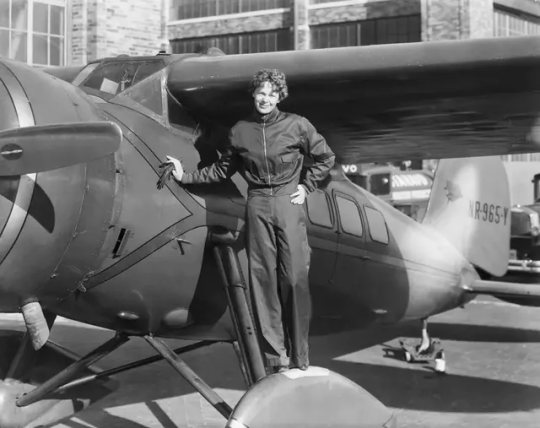

The expedition was led by Tony Romeo, who is a former intelligence officer with the U.S. Air Force, a pilot and a commercial real estate investor from South Carolina. In 2021, he sold his real estate properties and spent $11 million to fund the trip, including buying high-tech equipment to aid in the search.
“This has been a story that’s always intrigued me, and all the things in my life kind of collided at the right moment,” Romeo tells Business Insider’s Katherine Tangalakis-Lippert and Rebecca Rommen. “I was getting out of real estate and looking for a new project, so even though I really started about 18 months ago, this was something I’ve been thinking and researching for a long time.”
Last September, a team from the exploration company Deep Sea Vision, which Romeo founded, departed from Tarawa, Kiribati, in the South Pacific aboard a research vessel. Working in 36-hour shifts, the 16-person crew used an underwater autonomous vehicle equipped with sonar to scour the sea floor, scanning roughly 5,200 total square miles.
About 90 days into the trip, the team was reviewing sonar images and noticed something unusual in the data from some 60 days prior. The mysterious object looked to be about the same shape and size as an aircraft, and it was identified roughly 100 miles from Howland Island, which is within the region where experts think Earhart’s plane went down. The object is around 16,400 feet below the water’s surface.

By then, however, the crew had determined it was too late to return to the site for a closer look. The camera on the underwater vehicle was also broken, which meant they wouldn’t be able to see anything if they did circle back, reports the Post and Courier’s Tony Bartelme.
But Romeo is undeterred and hopes to revisit the area in the future.
“This is maybe the most exciting thing I’ll ever do in my life,” he tells the Wall Street Journal. “I feel like a 10-year-old going on a treasure hunt.”
In the meantime, the sonar image is not detailed enough for experts to draw any definitive conclusions.
“It definitely appears to be an aircraft of some sort,” David Jourdan, who has searched three times for Earhart’s missing plane and is the co-founder and president of the ocean exploration company Nauticos, tells the Post and Courier. “It has aircraft-like features. But sound is funny. It can mislead you. We can’t say it’s her plane until you put a camera on it.”
To truly identify the object, future missions would ideally capture detailed images that contain the registration number of the plane, says Cochrane. Or, at the very least, they might more clearly show the submerged object’s dimensions and shape to see if it matches the model of Earhart’s vehicle.

“It really requires further research,” says Cochrane. “Finding something that’s really worth investigating further is step one. Verifying it’s the actual craft is step two. And step three becomes: Is it possible to recover this or not, or should it just be left where it is?”
At the time of her disappearance, Earhart was a global celebrity—speaking with the Wall Street Journal, Romeo likens her to Taylor Swift today. In June 1928, Earhart became the first woman to fly across the Atlantic Ocean (as a passenger of pilots Wilmer Stultz and Lou Gordon), a feat that propelled her to international stardom.
Nearly four years later, in May 1932, she made history again by becoming the first woman to fly solo across the Atlantic Ocean. Later that year, she became the first woman to fly solo across North America and back. And in 1935, she became the first person, regardless of gender, to fly solo from Honolulu, Hawaii, to Oakland, California.
In the summer of 1936, the renowned pilot began to plan her most ambitious trip yet: a circumnavigation of the globe. On May 20, 1937, Earhart and her navigator, Fred Noonan, departed from Oakland for the first leg of the trip. They flew nearly 22,000 miles, making stops in Miami, South America, Africa and India along their eastward route.
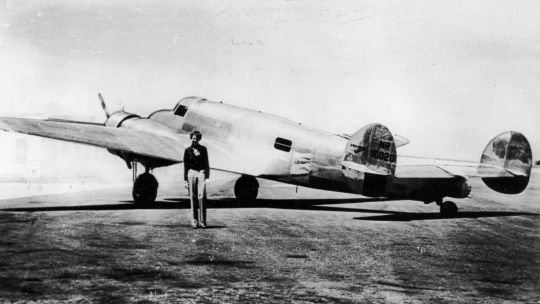
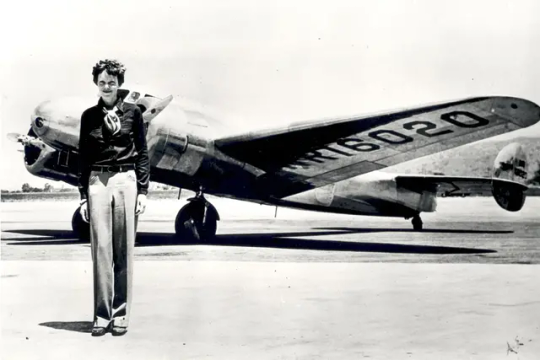
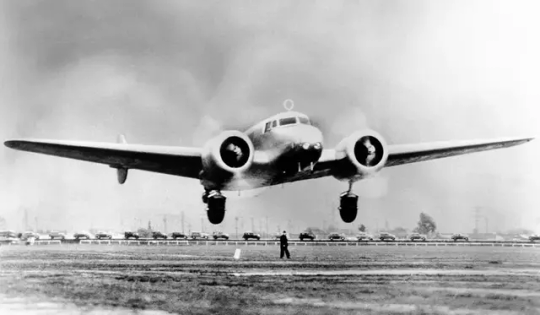
By late June, they had made it to Lae, Papua New Guinea. After a few days’ rest, they departed for Howland Island, a small, uninhabited outcrop in the Pacific where a refueling station had been built for their journey. The U.S. Coast Guard had a vessel, the Itasca, stationed nearby to help with the landing.
Operators aboard the Itasca heard Earhart’s radio messages as she got closer and closer to the island. But eventually, they lost contact. Earhart and Noonan were never seen or heard from again.
The U.S. Navy and Coast Guard spent 16 days searching for the missing duo without success. About one and a half years later, on January 5, 1939, Earhart was declared dead.
Theories abound about her mysterious disappearance—some onlookers have speculated that she was a spy or that she was captured by a foreign military. But Cochrane believes the simplest explanation is the most plausible: that Earhart and Noonan ran out of fuel near Howland Island.
“She’s got to be around there somewhere,” she adds.
By Sarah Kuta.
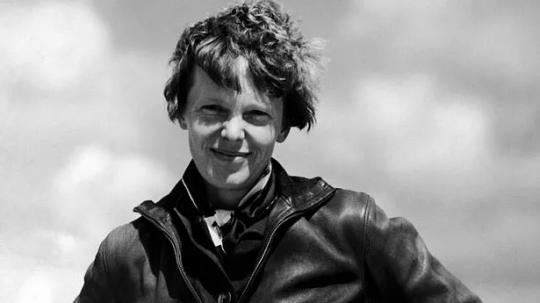
#Amelia Earhart#Have Researchers Found Amelia Earhart’s Long-Lost Plane?#Fred Noonan#Howland Island#Lockheed 10-E Electra plane#mystery#history#history news#long post#long reads
47 notes
·
View notes
Text
The dark side of Steampunk: Nox (Part 1)
There is this video made by the Youtuber schnee about Hazbin Hotel, and how its grimsical art style serves the purpose of forming the setting and dictating every writing decision through the usage of its thematic connotations.
youtube
It's a pretty interesting video to watch if you are a fan of that series, but I'm not here to talk about that.
No, I'm here to talk about a specific part of that video.
There's a certain timestamp in the video where schnee all of a sudden starts to talk about a movie named "Aeronauts", and how it perfectly nails the Steampunk aesthetic through its understanding of the themes of Steampunk and the historic/social connotations of his it's existence. Here:
For the purposes of his argument, schnee explains to us what Steampunk is all about and compares it to grim dark. While this was fascinating and all, after I've learned the meaning behind the Steampunk aesthetic I couldn't help to think about Noximilliem Coxen the Watchmaker from Wakfu, and how the show writers and character designers twisted the positive vibes of the style to create a more impactful and terrifying antagonist that swims confidently in his own aesthetic.
Today, I'm going to break down how Nox's story uses and twists the meaning of Steampunk to help him stand out.
There's going to be multiple parts to this analysis, so expect me to add their link in the future, but for now, I'm going to focus my attention entirely on the OVA episode and I'll tackle the main series at a later date.
The OVA:


Noximilien is a brilliant inventor specialized in the creation of clocks. His over excitement at the prospect of being the one to find the next big thing is very reminiscent of the classic Victorian scientist present in many stories, usually on the protagonist's side: at the start of his character arc, Milien is the embodiment of the optimism native of the XIX century from which Steampunk stories often take place.
Characterised by the industrial boom, Steampunk (Nox) seeks out to revolutionise the rigid lifestyle of the Victorian era through the wonders of machinery and science. This right here seems like the classic setup for any story of the genre, surely it can't vary more than this?


Unfortunately for our Watchmaker, this is the part where another genre of storytelling is introduced into the mix: the Eldritch horror.
Stories of Eldritch Horror are often characterised by the fear of the unknown: humans going insane trying to understand things that were never intended to be understood, some light ho######ia and ra###m sprinkled here and there, but you can't blame Lovecraft for being a bigot when he was so much worse than that.
Nox finds a mysterious object coming from outer space, it acts weird and suspicious, and he can't understand it, so he takes it back home where he can study it. (I don't know what the bubbles emitted from the cube and the following psychosis are meant to entail, but I think it's up to interpretation).


Immediately, Milien sees the cube as an exciting new discovery, already picking apart its effects on his clock and quickly brushing aside how it affected Igôle. It's honestly not that uncommon in stories of this genre, the inventor tends to be pretty self centered and not particularly emotionally intelligent, it's a flaw that tends to go undeveloped, but it's usually never a problem for these people (Unless they are the villain 🌚).


But here, it's where unfortunately the rift between his family and his desires starts to form: at the beginning of the episode, Galanthe was nothing but supportive of her husband's passion for his inventions and the future, but here, when she asks her husband to let go of his current hyper fixation, she, quite literally, puts a stop to the Industrial dream, one of the cores of this genre; basically rejecting Nox himself, whose the personification of Steampunk.
Naturally, Milien is at fault here, he shouldn't be taking her response too dramatically, but this is going to be the base to his later turn towards the obsession.


While we're here, I might as well mention the beggar and the puppet show.
They're not all that important to Noximilien's character arc (aside from the money problem giving him a ticking clock to all of his actions🌚🌚), but they do provide important pieces of character building and themes for our analysis, so I'm going to briefly touch on them.
The beggar and the puppet show serve to better establish and build up our Steampunk narrative before it can later be destroyed by the Eliacube.
The beggar, is our representation of society. More specifically, Victorian society. He's naturally unimpressed by Milien's creativity and ingenuity, and only seeks to get his part of the bargain. He's strict, rigid, and he's clearly intended to be the obstacle in this situation.
The conflict between the beggar and Milien parallels the conflict between the Victorian society and the positivity of modern science; said tension is the bread and butter of Steampunk and the reason why this aesthetic gained so much popularity in the first place.
The puppet show, created by our inventor, is, again, another establishing piece for our setting, it's the original direction Nox's character was supposed to take, becoming someone who uses their brilliance and generosity to better the world and brighten their family's lives.
If only Milien stayed in bed that night instead of going to temper with the Eliacube, who knows what could have happened.
Maybe, he wouldn't have found the Cube to be all that shiny when he woke up the next morning......
Next part>>>>
Want more Wakfu analyses? Give your vote here.
#Youtube#wakfu#wakfu nox#hazbin hotel#steampunk#noximilien#xix century#wakfu ova#wakfu villains#eldrich horror#lovecraft#essay
16 notes
·
View notes
Text


#Rovigo#lensblr#photographers on tumblr#original photography#original photographers#original photography on tumblr#historic#europe#italian#Architecture#building#beauty#art#airplane#aereoplano#villa#aeronautic
8 notes
·
View notes
Text

Randy’s Warbird Profiles: Grumman F7F-3P Tigercat
June 28, 2024 Angela Decker Warbirds News 0
By Randy Malmstrom
Since his childhood, Randy Malmstrom has had a passion for aviation history and historic military aircraft in particular. He has a particular penchant for documenting specific airframes with a highly detailed series of walk-around images and an in-depth exploration of their history, which have proved to be popular with many of those who have seen them, and we thought our readers would be equally fascinated too. If Randy’s last name seems familiar, it is because the U.S. Air Force’s present-day Malmstrom AFB, near Great Falls, Montana is named in honor of his cousin, Col Einar Axel Malmstrom. Col Malmstrom commanded the 356th Fighter Group during WWII, flying P-47 Thunderbolts, the first of Randy’s articles featured an example of the type, P-47D 45-49406 (N7159Z) at the Flying Heritage & Combat Armor Museum in Everett, Washington.

This installment of Randy Malmstrom’s aircraft profiles takes a look at the Grumman F7F Tigercat. On January 2, 1930, Grumman Aircraft Engineering Aircraft Corporation was founded by Leroy (“Roy”) Grumman three of his friends, Leon (“Jake”) Swirbul, William Schwendler, and Edmund Ward Pool, when they left Loening Aeronautical Engineering Corporation. First located in Baldwin, New York, the plant was moved to Valley Stream and Farmingdale before moving to Bethpage, New York in 1937. Initially nicknamed the “Tomcat” (but considered too suggestive), what became the “Tigercat” was designed as a carrier-based aircraft for the larger U.S. Navy Midway-class carriers.
Detail design began in 1941 but was delayed by including an “unsatisfactory” tailhook design and poor directional stability with only one engine operational, but the biggest delays came from the Navy asking Grumman to give priority to the development and production of the Hellcat. The Tigercat was powered by a pair of Pratt & Whitney R-2800-34W Double Wasp radial engines and was fitted with four M2 cannons (two in each wing root) and four 0.50 cal. M2 Browning machine guns in the nose. It had a max payload of 2,000 lbs. and could be configured to as a single or two-seater.

XF7F 1 at Moffett Field 1946
XF7F-1 BuNo 03550, the second prototype, at Moffett Field, California in 1946. NASA photo
In November 1944, F7F-1 BuNo 80291 completed the type’s carrier qualification trials aboard USS Shangri-La (CV-38), but by that time the land-based VMF-911 had been training on F7F-1s at MCAS Cherry Point, North Carolina since the summer of 1944. After producing just 34 -1s, Grumman began turning out F7F-2s, which, at the Navy’s request provided space for a radar operator, which required the capacity of the reserve fuel tank to be reduced from 426 to 375 gallons.
The story of the Tigercat in World War II is a case of so close, yet so far. The first squadron to receive the F7F-2N was Marine Night Fighter Squadron Five three One (VMF(N)-531) Grey Ghosts, which embarked aboard USS Attu (CVE-102) on July 24, 1945. As the ship neared Guam, the atomic bomb was dropped on Hiroshima on August 6. After unloading in Guam, the squadron arrived on Okinawa on September 1, the day before the Japanese signed the “Japanese Instrument of Surrender the following day. The same fate befell Marine Photographic Squadrons Two Five Four (VMD-254) and Three Five Four (VMD-354), both of which operated the F7F-3P. The combat debut of the Tigercat would have to wait five years just across the Sea of Japan. During Korea, VMF(N)-542 Tigers and -513 Flying Nightmares flew night interdiction and close air support sorties with the latter squadron shooting down a pair of Po-2 biplanes on night harassment raids. Combat operations for the Tigercat ended in April 1952, when the Flying Nightmares flew it final combat sortie, although a number of F7F-3N/-4N/-3Ps continued to fly in non-combat roles until the end of the war.

While 1,500 Tigercats were commissioned, fewer than 500 were delivered, and, to my knowledge, only eight remain airworthy. This particular F7F-3P, BuNo 80483, was delivered to the U.S. Navy on July 24, 1945 and was assigned to NAS San Diego. After 46 hours of non-combat flying time, it was relegated to the boneyard at NAS Litchfield Park, Arizona but became one of less than twenty Tigercats eventually rescued from Litchfield. This example flew for SIS Q Flying Services out of Santa Rosa, California. In 1962, SIS Q Flying Services of Santa Rosa, California won a National Forest Service contract to provide airborne forest fighting services in California and Oregon and acquired a number of Tigercats, including 80483, and outfitted them for aerial fire fighting operations. Registered as N6178C, this aircraft flew over 1,300 hours with SIS Q Flying Services before eventually being sold.
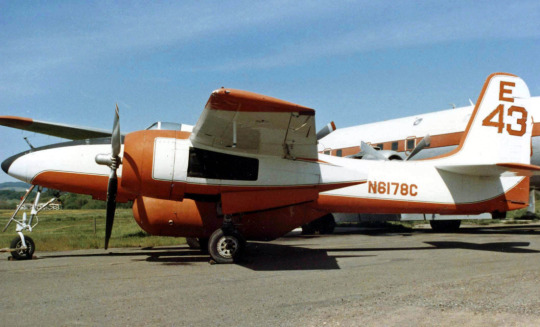
Grumman F7F 3N Tigercat Sis Q Santa Rosa CA March 3 1988 RuthAS
Our subject Tigercat in Santa Rosa, California on March 29, 1988 during its career with Sis Q Flying Services. RuthAS photo.
In November 1988, it was shipped to Duxford, U.K., and for a time was painted as a Tigercat of U.S. Marine Corps VMF(N)-542. It was then acquired by a John Sessions entity in 2003 for the Historic Flight Foundation which is now shuttered but was previously located in Spokane, Washington. In 2016, it was sold to Comanche Maverick Air, L.L.C., a Houston, Texas-based entity, owned by Dan Friedkin. It is currently painted as an F7F-3P with tail code “MW” of U.S. Marine Corps VMJ-1, and in the name of a former Tigercat pilot, aeronautical engineer and author Lieutenant Commander A.M. “Mike” Granat, United States Navy (Ret.), Lt Commander Granat flew over 30 aircraft, including the Tigercat.

About Randy Malmstrom
Randy Malmstrom grew up in a family steeped in aviation culture. His father, Bob, was still a cadet in training with the U.S. Army Air Forces at the end of WWII, but did serve in Germany during the U.S. occupation in the immediate post-war period, where he had the opportunity to fly in a wide variety of types which flew in WWII. After returning to the States, Bob became a multi-engine aircraft sales manager and as such flew a wide variety of aircraft; Randy frequently accompanied him on these flights. Furthermore, Randy’s cousin, Einar Axel Malmstrom flew P-47 Thunderbolts with the 356th FG from RAF Martlesham Heath. He was commanding this unit at the time he was shot down over France on April 24th, 1944, spending the rest of the war as a Prisoner of War. Following his repatriation at war’s end, Einar continued his military service, attaining the rank of Colonel. He was serving as Deputy Wing Commander of the 407th Strategic Fighter Wing at Great Falls AFB at the time of his death in a T-33 training accident on August 21st, 1954. The base was renamed in his honor in October 1955 and continues to serve in the present U.S. Air Force as home to the 341st Missile Wing. Randy’s innate interest in history in general, and aviation history in particular, plus his educational background and passion for WWII warbirds, led him down his current path of capturing detailed aircraft walk-around photos and in-depth airframe histories, recording a precise description of a particular aircraft in all aspects.
Author ProfileRelated Posts
Angela-Decker
Angela Decker, from McPherson, Kansas, discovered her passion for aviation after earning a Master’s in Military History from Norwich University in 2011. Since 2012, she has volunteered with vintage aviation groups, excelling as a social media content creator and coordinator. Angela has coordinated aviation and WWII events, appeared as Rosie the Riveter, and is restoring a Stearman aircraft. She is the Operations Logistics Coordinator at CAF Airbase Georgia and an accountant with a degree in Economics from the University of Georgia. Her son, Caden, shares her love for aviation and history and is studying Digital Media Arts.
@VintageAircraftNews.com
9 notes
·
View notes
Text

Captain Ed Dwight (September 9, 1933) the first African American astronaut candidate, IBM computer systems engineer, real estate developer, professional sculptor, and former Air Force test pilot, was born in Kansas City, Kansas.
His father Ed Dwight, Sr. played second base for the Kansas City Monarchs in baseball’s Negro League which left Ed with his mother, Georgia Baker Dwight. He graduated from Bishop Ward Private Catholic High School in Kansas City, The school did not accept African Americans, but his mother wrote to the Vatican directly, and they ordered the school to accept her son and racially integrate. He attended Kansas City Junior College where he completed an AA in Engineering and enlisted in the Air Force. He racked up over 9,000 flying hours. He continued his education and graduated with an Aeronautical Engineering BS from Arizona State University. He received his MFA in Sculpture at the University of Denver.
He was accepted as the first African American in NASA’s Astronaut Training Group. He was not selected as an astronaut and he resigned from the Air Force at the rank of Captain. He took a position with the IBM Corporation as a Marketing Representative & Systems Engineer. He became an Aviation Consultant for a Dallas firm and joined Executive Aviation, Inc. He founded Dwight Development Associates, Inc. a Real Estate Land Development, and Construction Company, and became one of the largest Real Estate development entrepreneurs in Denver.
He would become recognized for many of his sculptures across the country, including that of the historical life-size sculpture representation of President Barack Obama’s first inauguration scene, and the Underground Railroad Memorial in New Jersey. He owns a studio/gallery and foundry in Denver. He has received hundreds of awards from around the US for his achievements & contributions to racial progress through his many sculptures. He has received an honorary doctorate from his alma mater, Arizona State University. He was made an honorary Space Force member. #africanhistory365 #africanexcellence #phibetasigma
7 notes
·
View notes